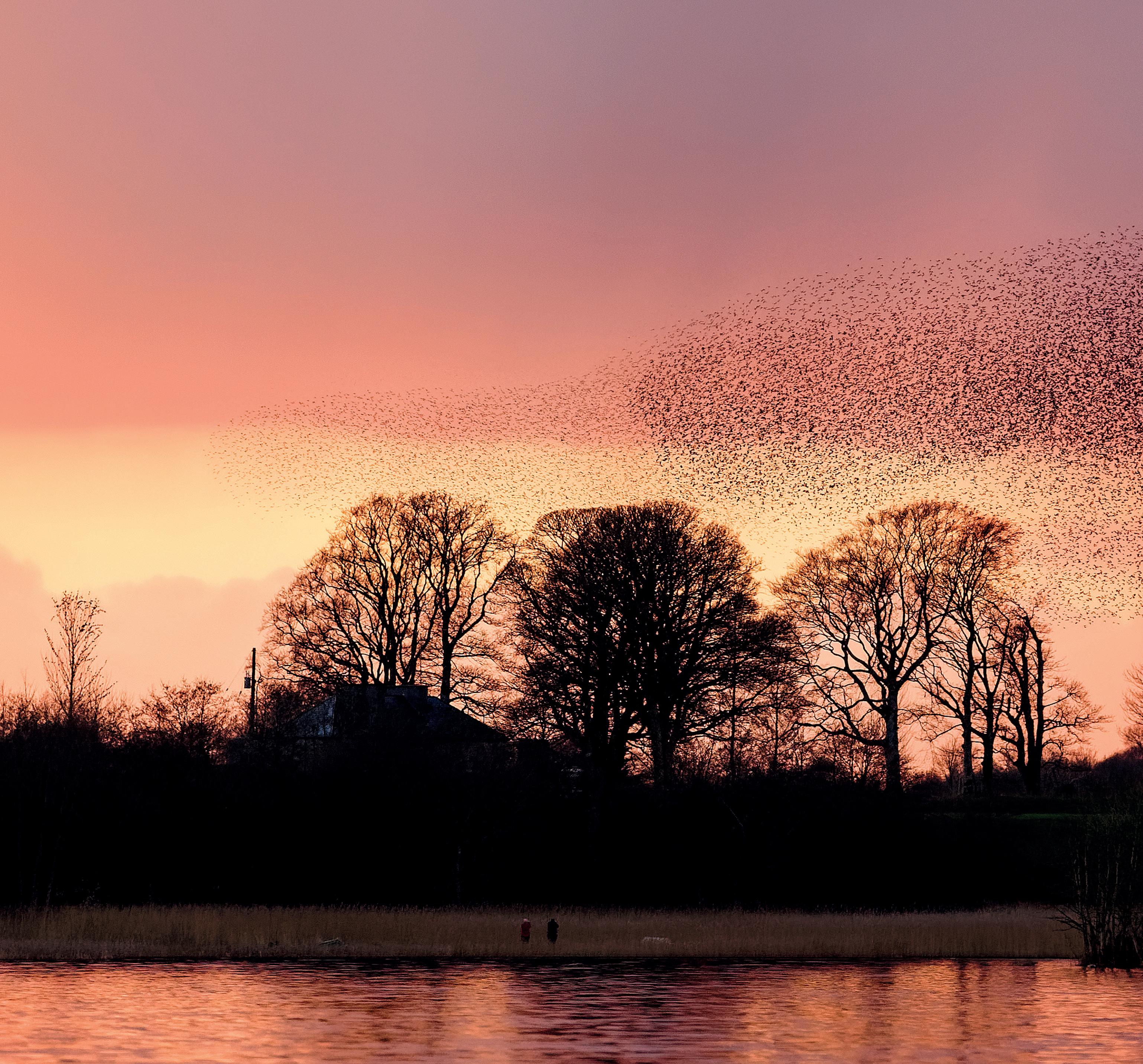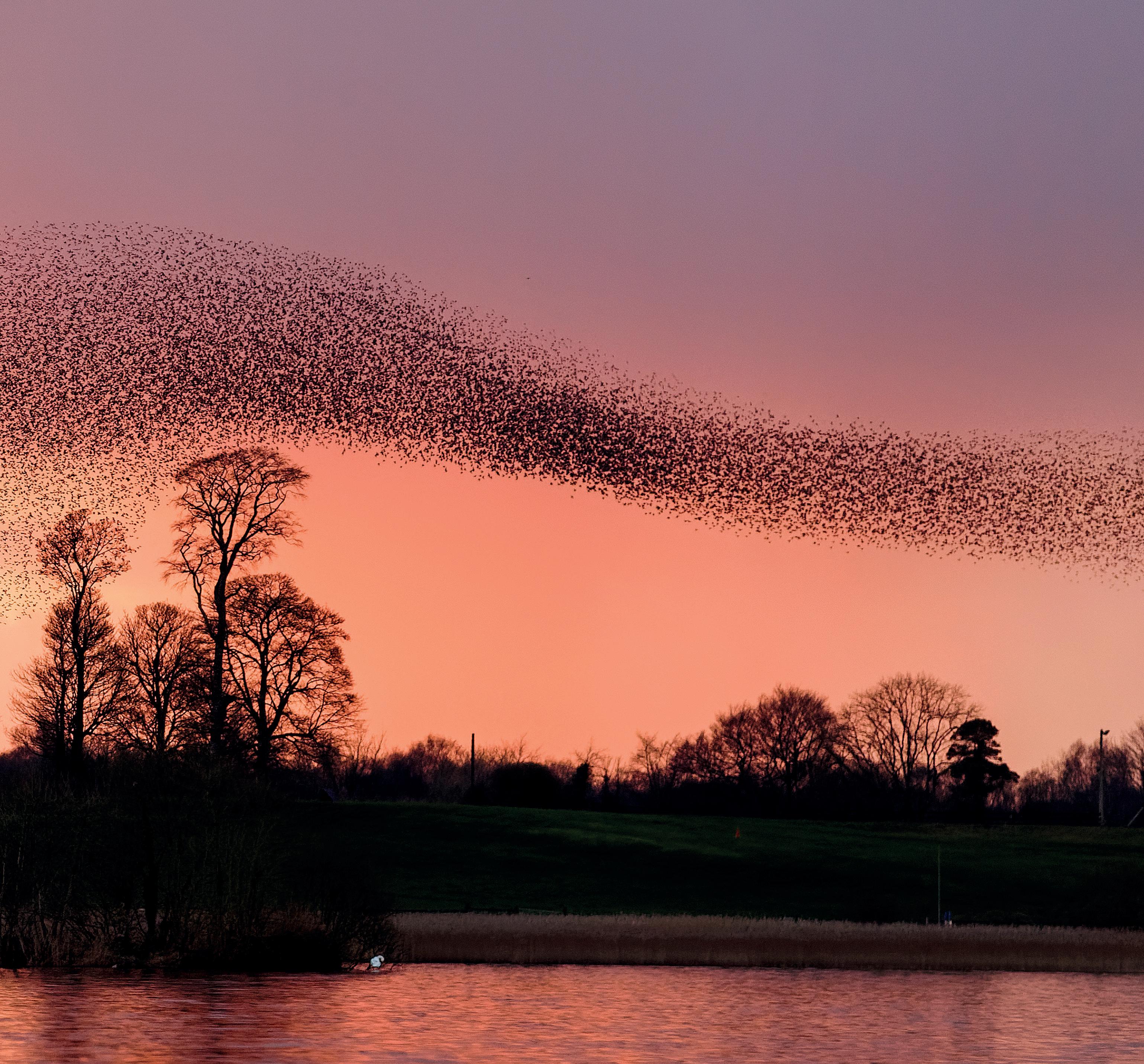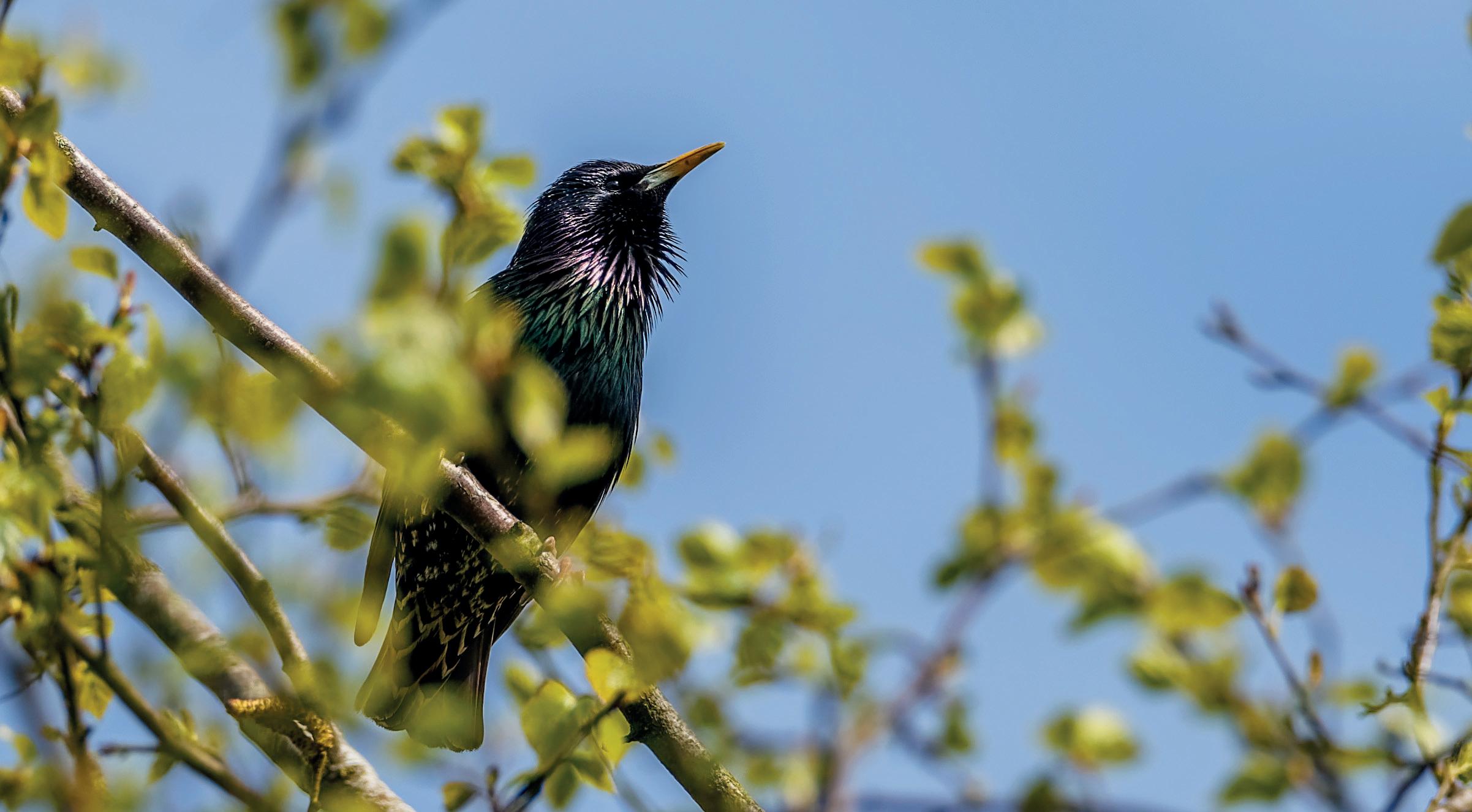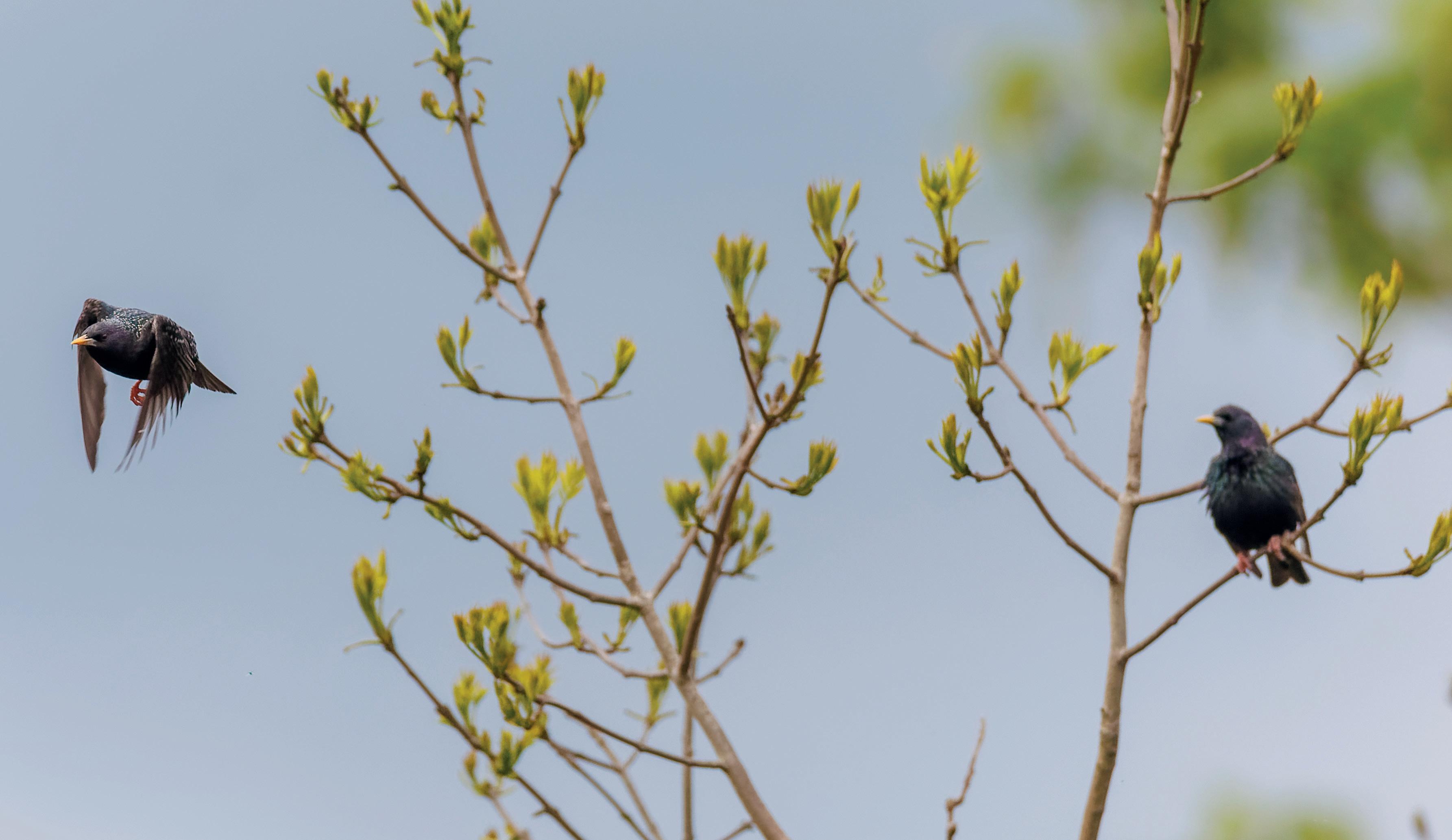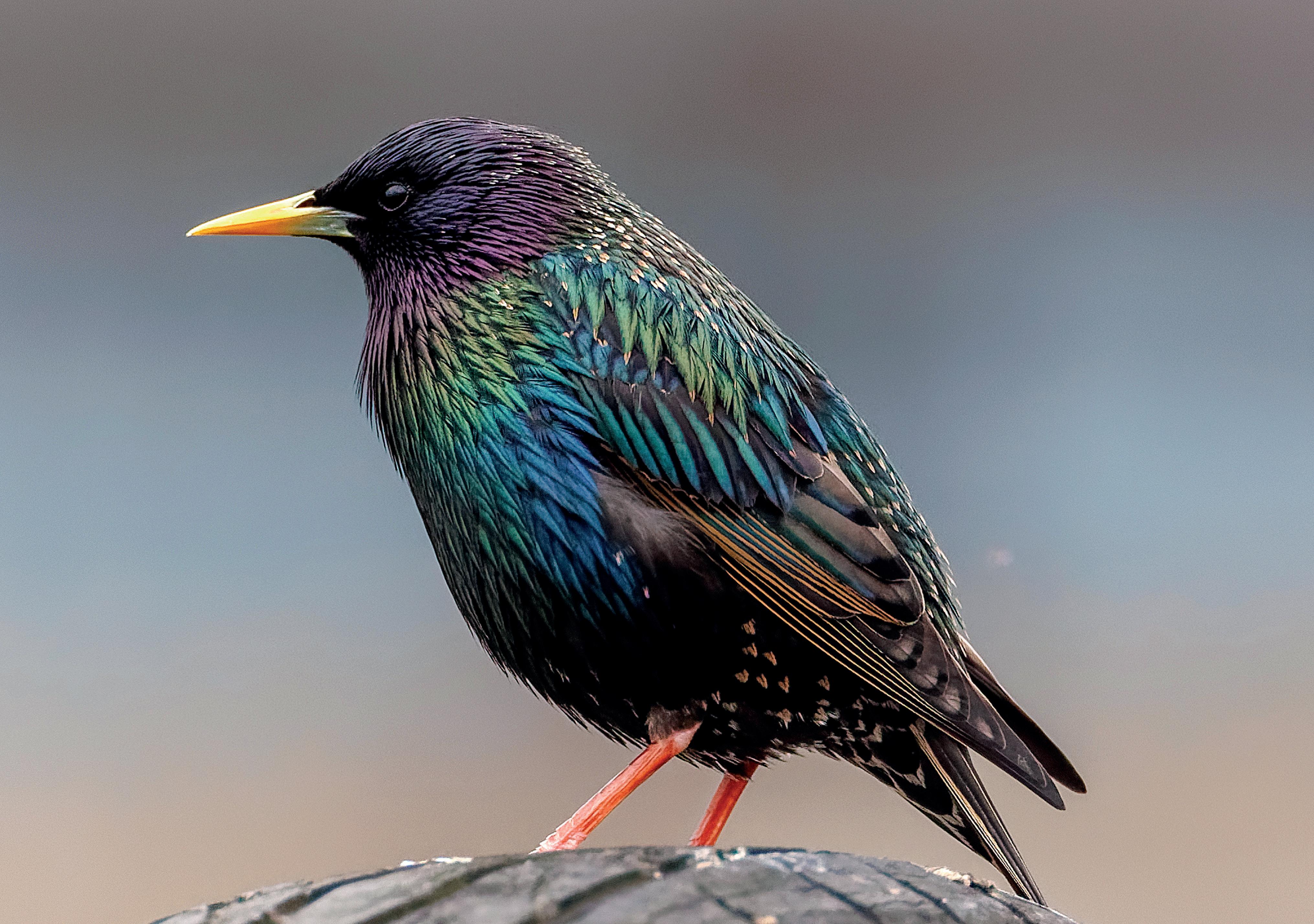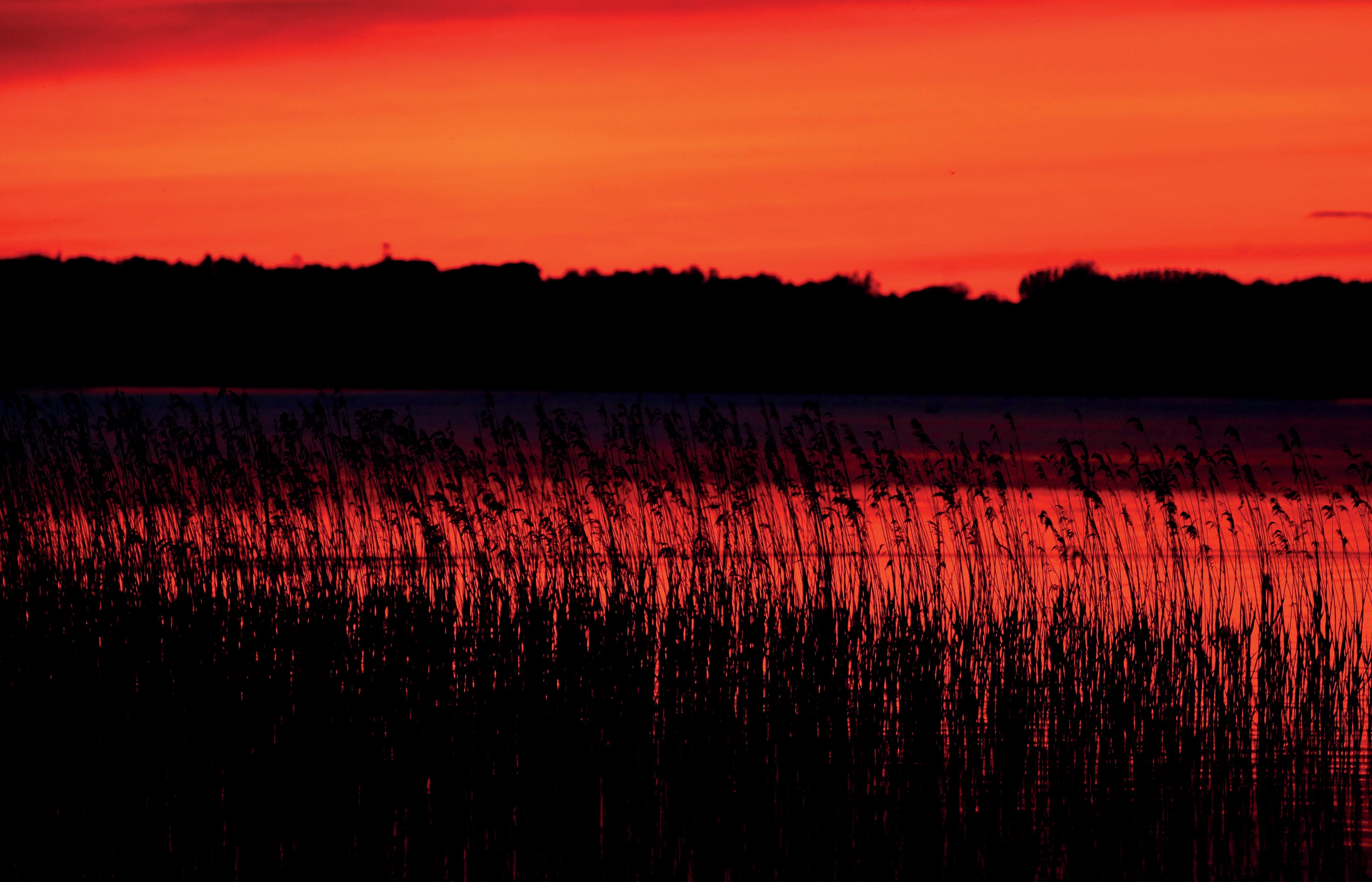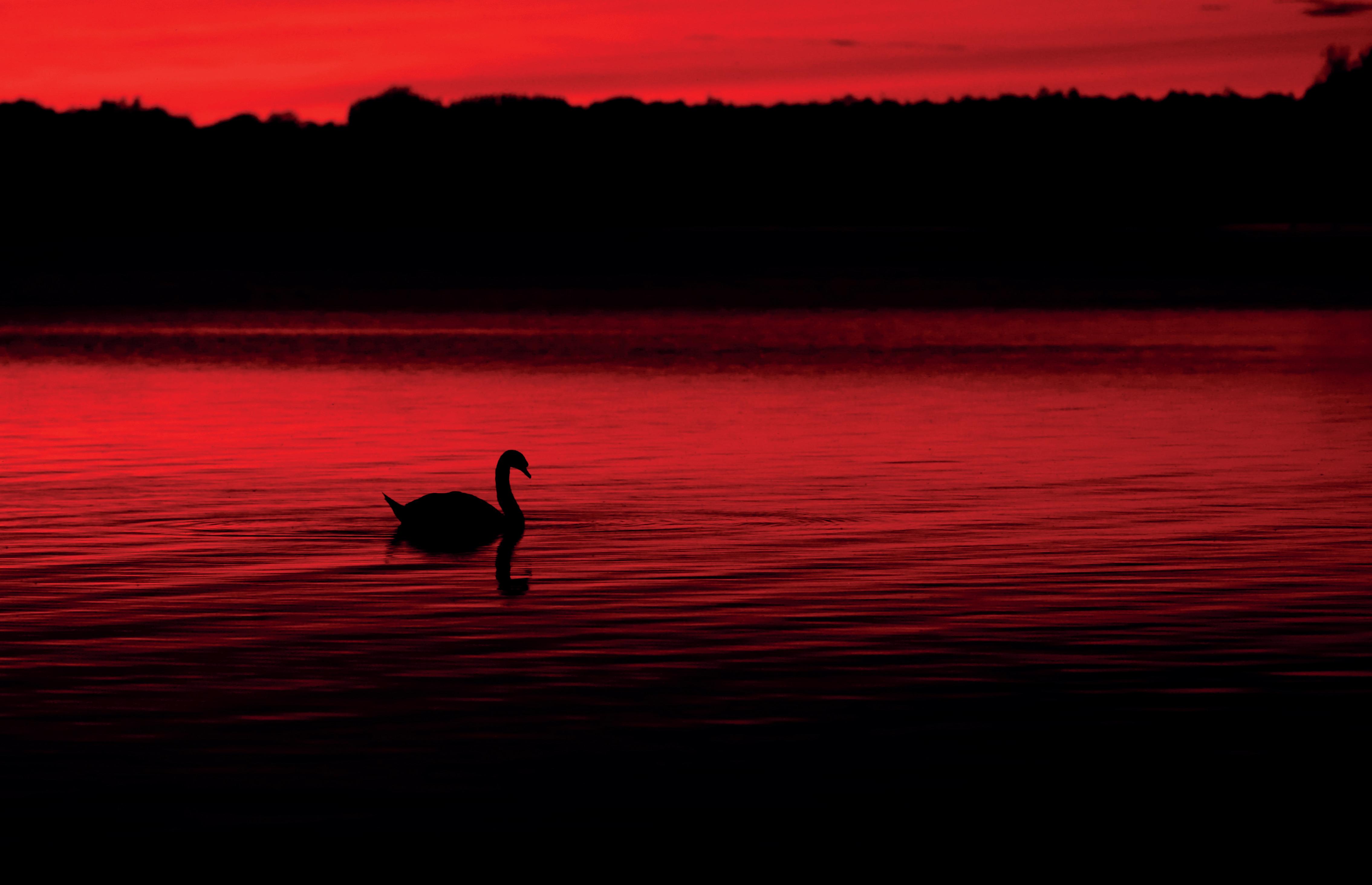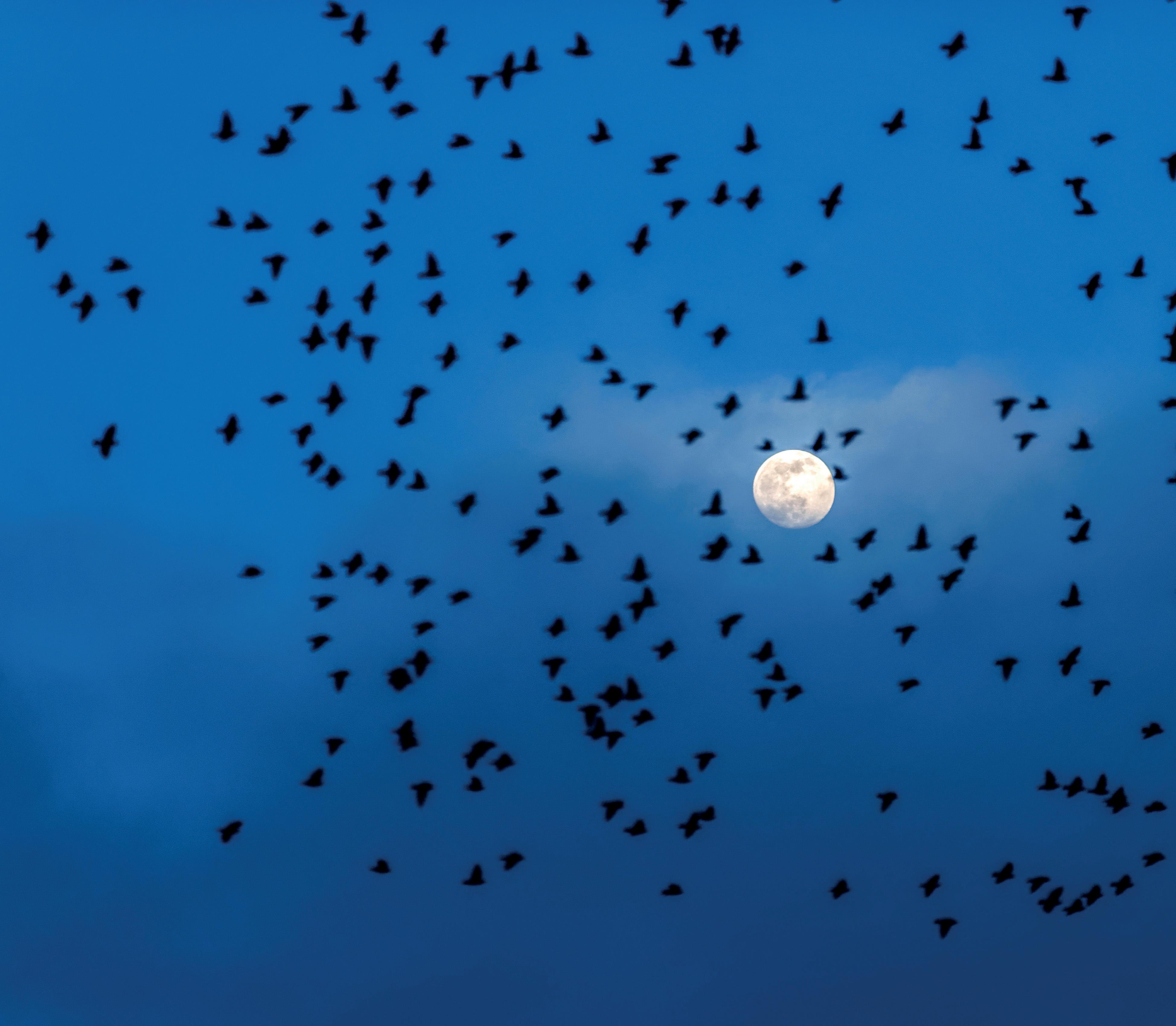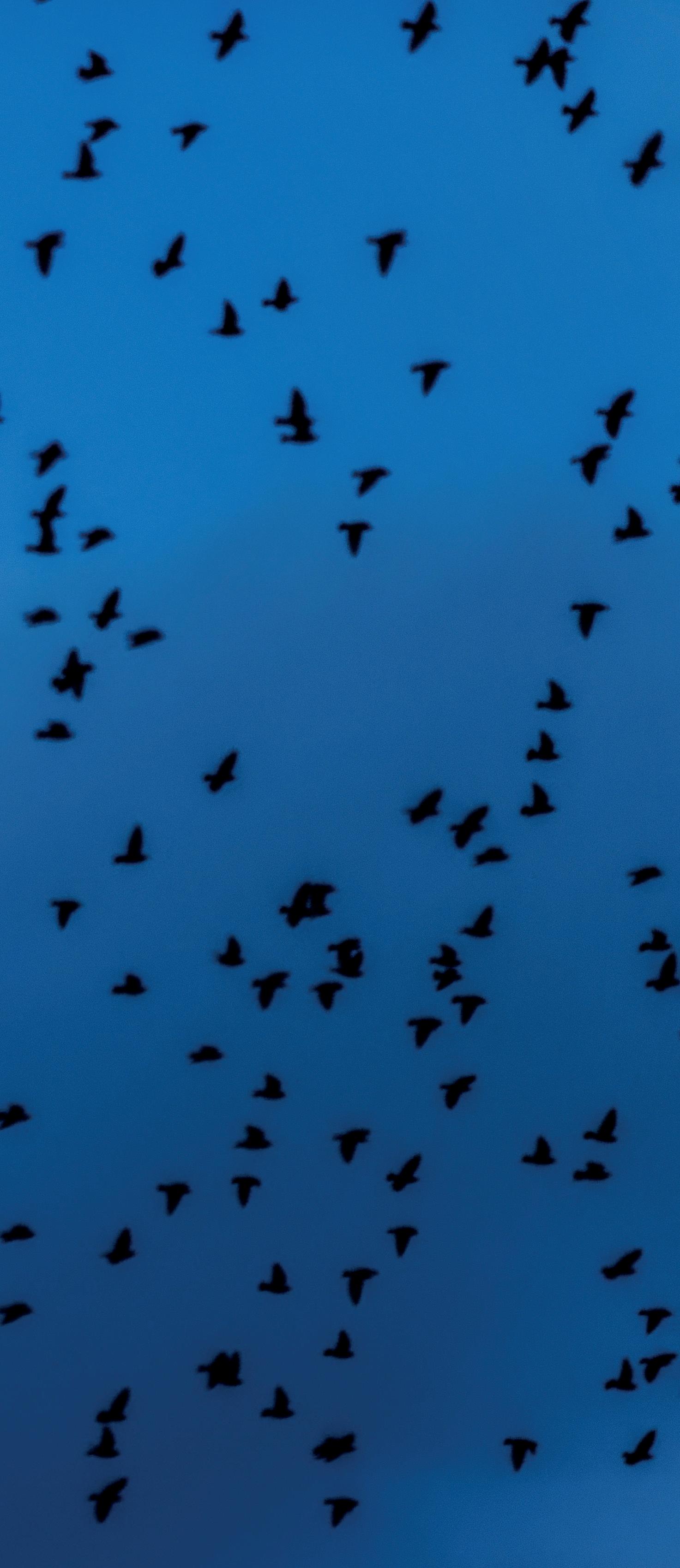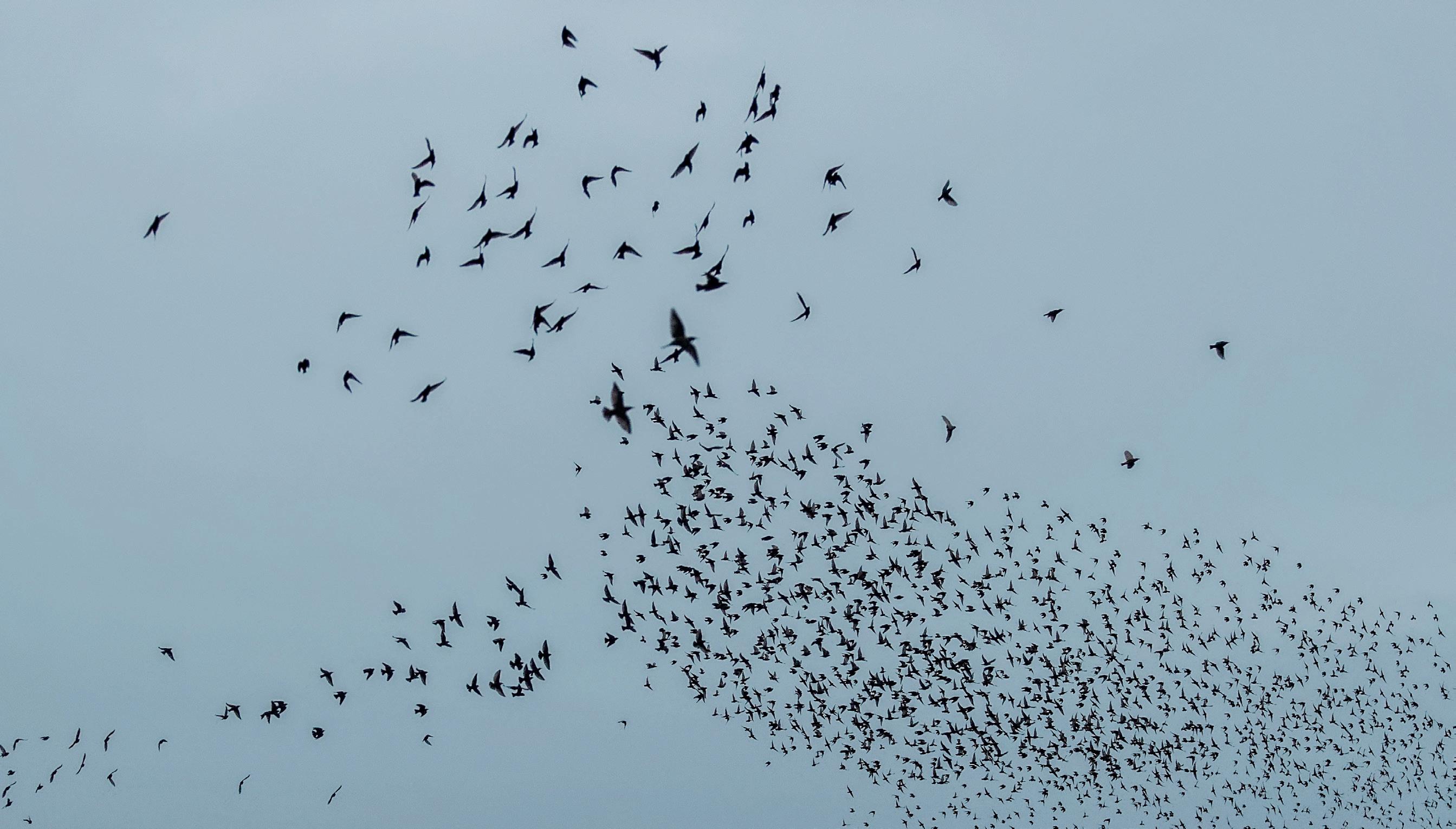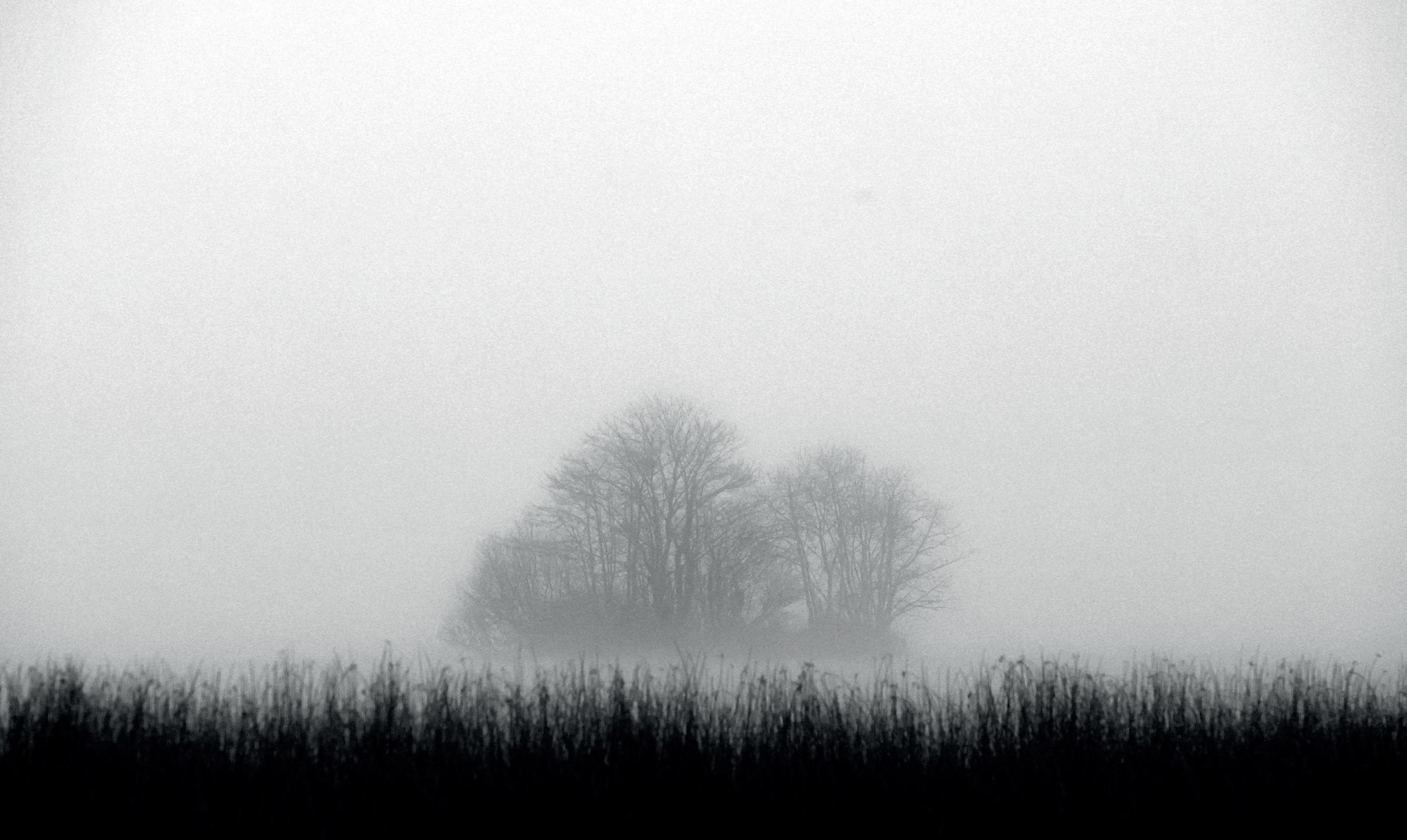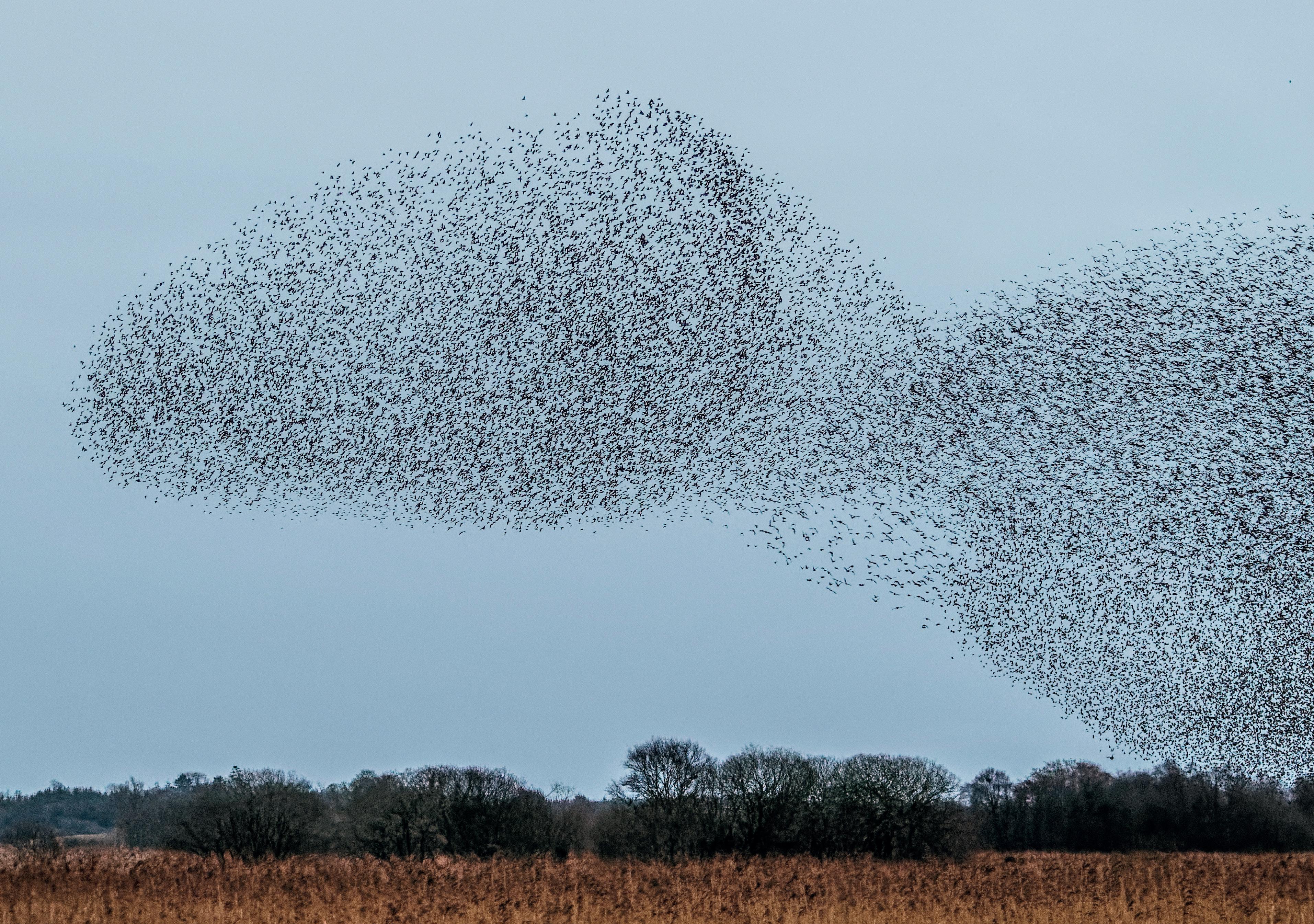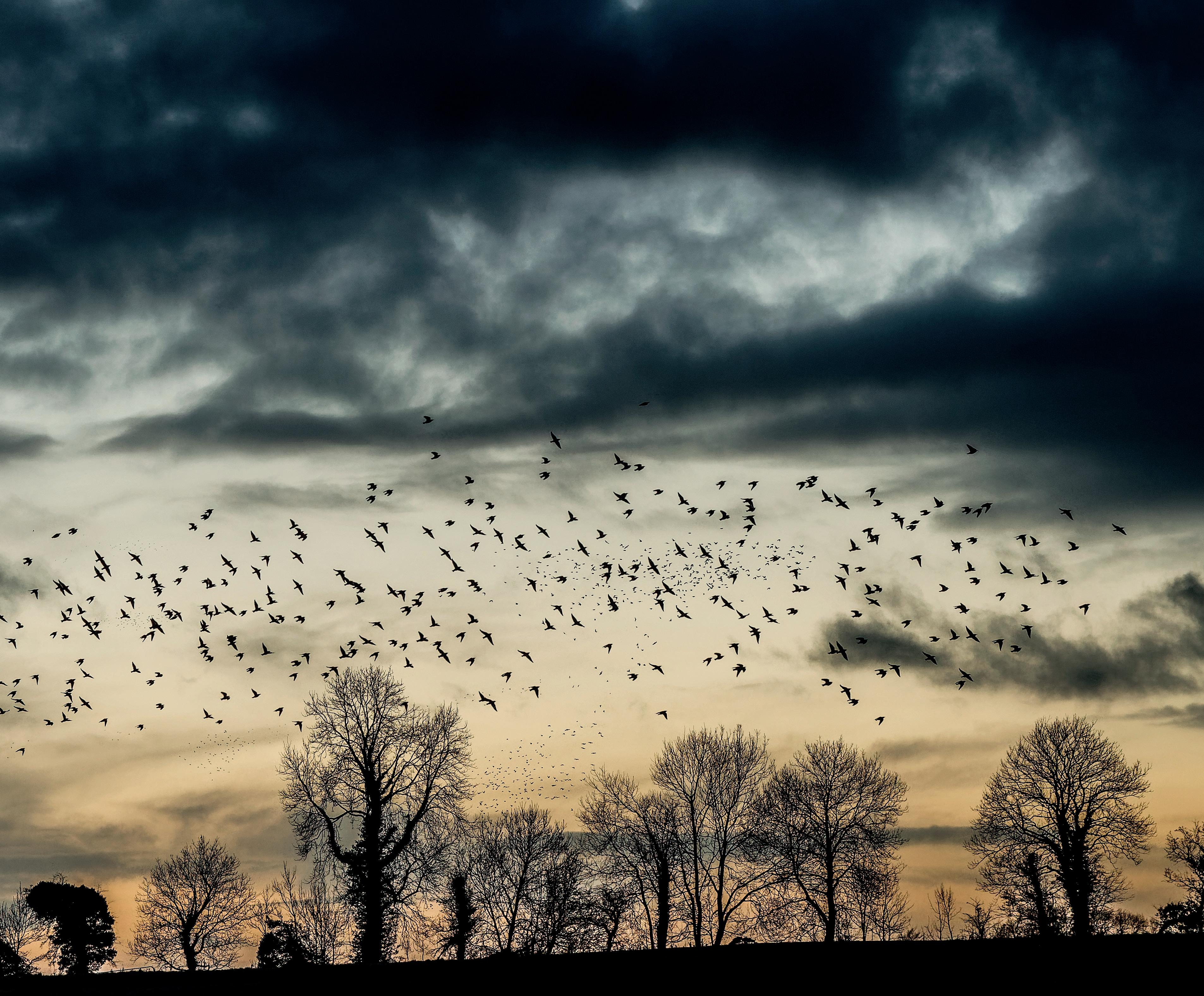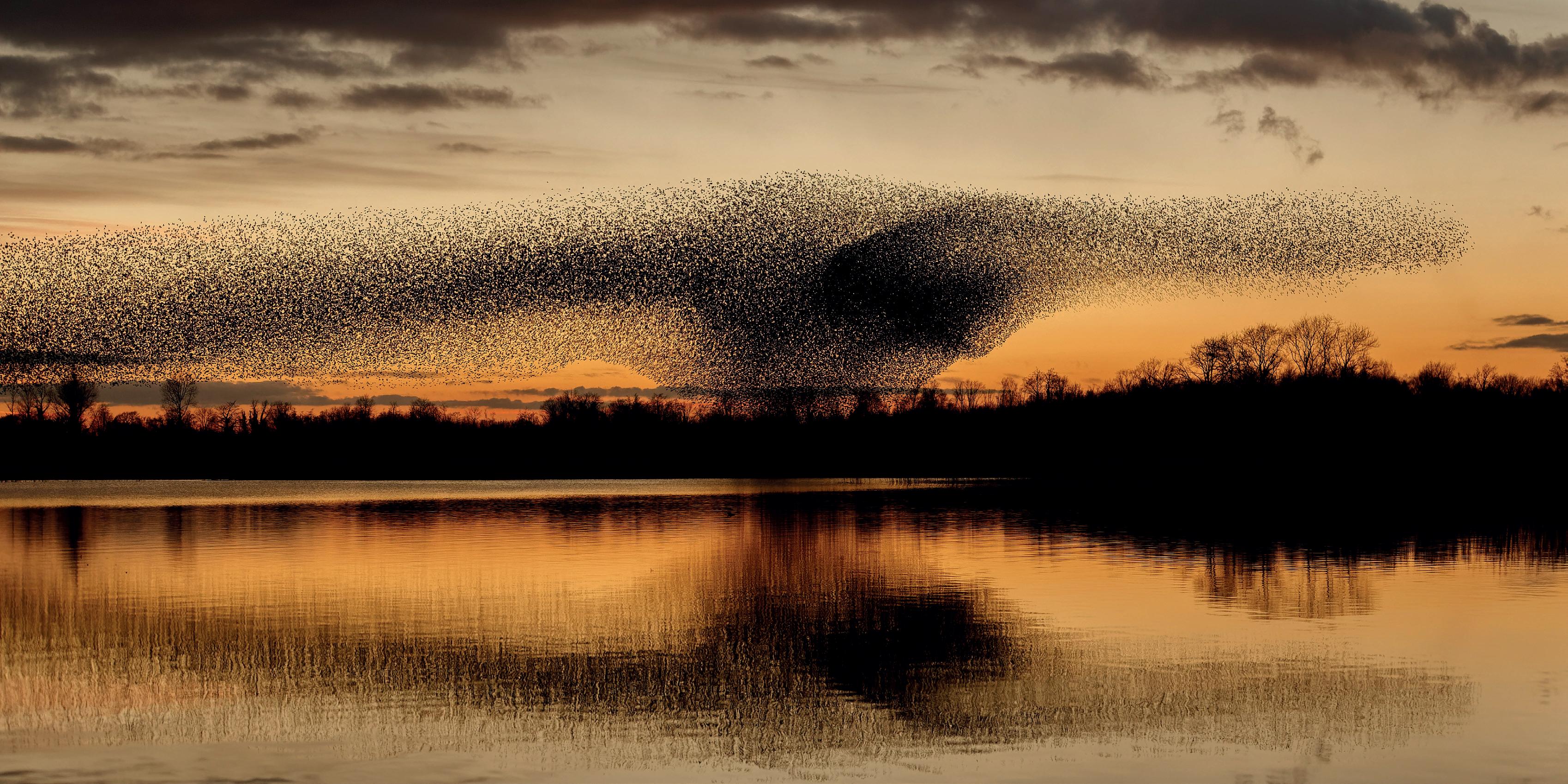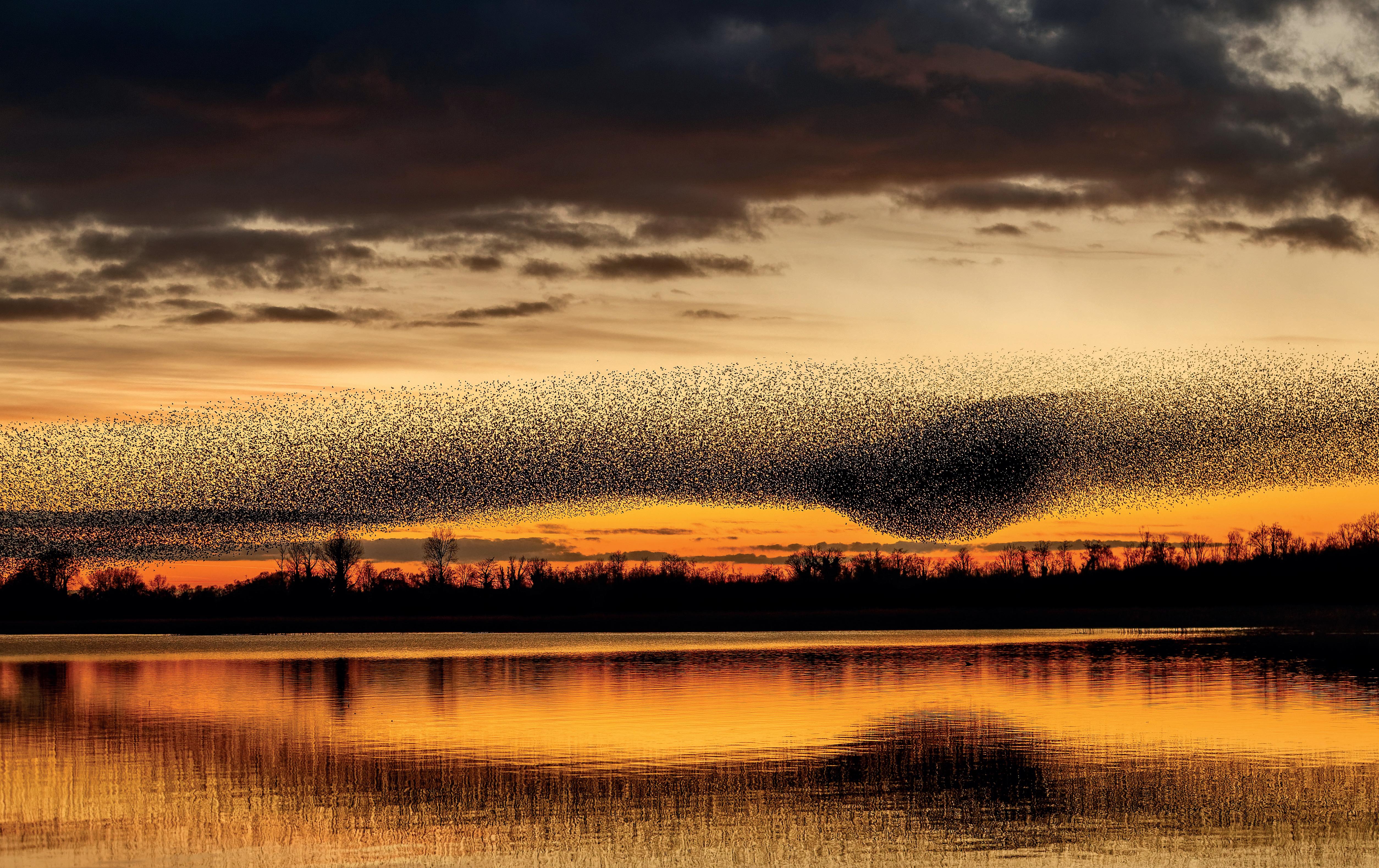
Foreword by Seán Ronayne
Words by John Fallon
First published 2024 by THE LILLIPUT PRESS
62–63 Sitric Road, Arbour Hill, Dublin 7, Ireland
www.lilliputpress.ie
Images © James Crombie, 2024 Foreword © Seán Ronayne, 2024 Main text © James Crombie & John Fallon, 2024
10 9 8 7 6 5 4 3 2 1
All rights reserved. No part of this publication may be reproduced in any form or by any means without the prior permission of the publisher.
A CIP record for this title is available from The British Library.
Hardback ISBN 978 1 84351 911 9
eBook ISBN 978 1 84351 9294
Lilliput gratefully acknowledges the financial support of the Arts Council / An Chomhairle Ealaíon.
Set in Field Gothic and Adobe Garamond Pro by Niall McCormack Printed and bound in Czechia by Finidr
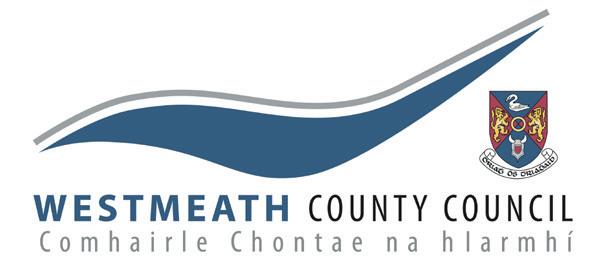


To my wife Ann
by Seán Ronayne
Common Starlings (Sturnus vulgaris) are a widespread and often overlooked species throughout the nation of Ireland, and indeed Europe. Starlings are a medium-sized (approx’ 20cm long) passerine bird. At first glance they look a plain black, but look again! On closer inspection their black plumage shimmers in waves of green and purple iridescence. A further sprinkling of white speckles stand out like sparkling sequins.
If their subtly wonderful plumage isn’t enough to woo, then their incredible song and their uncanny vocal mimicry surely makes them one of our most amazing bird species. Starlings are lifelong vocal learners. Many species only learn in the first few months of their lives, after which their song is set in stone. Starlings, however, can continue to learn and add to their song throughout their lives, which, paired with a sharp ear for accurate mimicry, makes them one of our most impressive songsters.
I had the pleasure of hosting a family of Starlings in my roof in North Cork some years back. At the time I was passively recording the sounds of nocturnally migrating birds overhead. I strategically angled
my microphone so that it not only pointed at the night sky, but also the nest hole in the roof. This meant that my recorder would capture all of the birds that passed overhead while I slept, but then also captured the song of the Starling as it woke each morning. what I learned over the following months was nothing short of jaw-dropping.
As different wildlife events unfolded at night, the Starling began to reflect this in its mimetic repertoire. In late January the local foxes began to echo their banshee-like screams along the fields behind the house, and a week or two later this sound was added to the Starlings’ song. Later on, in late March, when Snipe and Golden Plover began to migrate overhead at night in numbers, these too were added to the song. But best of all was hearing ‘our’ Starling begin to speak in a Cork accent. Each day I would let our dog Toby out in the garden to do his business and have a roll in the grass. After some time, I’d open the door and call him back in, with a Cork lilt: ‘c’mere’. I nearly fell off my chair one morning when I heard the Starling echo my command from the roof above me, accent and all.
Despite their many charms, Irish Starlings are in trouble. Once common throughout the country, their numbers have suffered a serious decline, and they are now featured in the Amber-list of Birds of Conservation Concern Ireland. This often comes as a surprise to people when they learn it for the first time, because our Starlings have always been such a familiar sight in a plethora of both rural and urban habitats throughout the land.
However, our agricultural intensification, coupled with a staggering increase in pesticide and herbicide use, as well a large decline in plant species diversity on our farms and in our townlands has meant that insect populations have plummeted. As insects form a major part of the diet of Starlings, this loss has in turn impacted their ability to raise young and thrive as they once did. A reduction in nesting sites has also had a big impact on their ability to successfully breed and raise young.
Mu RM u RATIONS
James Crombie with John Fallon
What drives us in the pursuit of excellence, in the pursuit of beauty, of the next great moment, the next great shot? what drives one man to photograph the greatest sporting moments of our time? what drives that same man to head out into the dark and cold of three-hundred winter evenings, to kneel by the edge of a lake and wait, camera in hand, for something special to take place, away from the roar of crowds and the clash of bodies. what drives that man to wait, and wait, learning the patterns of nature and the slow shift of the seasons and finally to capture glimpses of one of Ireland’s greatest natural phenomena.
James Crombie has never been sure what drives him back to the shores of Lough Ennell, back to the murmurations of starlings who make the lake a temporary home during the winter months, before many of them make their annual migration to Scandinavia. Yet James has returned night after night, for over four years, to watch the weft and flow of the birds, reading images into their movements and capturing like no photographer before him the natural life cycles of the lake, the birds, and the environment that sustains this amazing natural event.
Over those four years, alongside friends new and old, James learned the ways of the lakeshore – both its wildlife and its people. From the murmurations whose movements could darken the sky, to the subtle beauty of the lake’s swans, its majestic birds of prey, ethereal horses and much more, James came to know the place and its seasons in ways he couldn’t have imagined. He also came to know the people of the lake – the farmers, swimmers, bird-watchers and locals – and how their lives were entwined with the lake and the animals who lived on it.
Four years and half a million photographs later, this is the story of one photographer’s relationship with a lake, and the wonders that he found there.
A Westmeath native , James, who now lives in Offaly with his wife Ann and their young family, is one of Ireland’s top photographers, covering sporting events throughout Ireland and all over the world for the Dublin-based Inpho Photography agency. James has travelled the globe in pursuit of photographing sporting greatness, from the Olympics to the All-Ireland, and works with Inpho as an official photographer for a number of international rugby organisations including the IRFU, EPCR, Six Nations and the British and Irish Lions.
It can be a hectic working lifestyle for professional photographers on that international beat. Aside from the continual travel, matchdays are particularly demanding. A photographer covering a Six Nations rugby international will snap somewhere between 3,000 and 4,000 photographs per game. Time is of the essence, and a photographer must have the photo of a try being scored submitted by the time the conversion is taken. Crombie and his colleagues were well used to those demands, travelling from one major event to another and juggling endless deadlines and a pace that never let up.

That is, until March of 2020, when the Covid pandemic struck and, initially at least, meant that all sports were called off. used to travelling the world, working at a relentless pace, this was something James, or anyone else, could never have foreseen. The hectic work-life he was so accustomed to came to a shuddering halt in that moment. Far from the maddening crowds of Croke Park or the Stade de France, he found himself confined to the environs of his rural home in the Irish midlands.
‘There was absolutely nothing on, which meant I had nothing to photograph. we had an initial schedule worked out that was just an endless list of matches, press conferences, commercial shoots, flights, car hire, accreditation, train tickets and so on. The usual week-to-week hectic schedule, and overnight it just ground to a halt.
